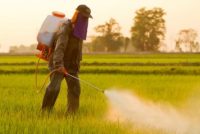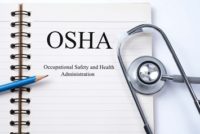Safety is a process, and as such, needs to be managed. This section offers resources to create a viable safety program, sell it to senior management, train supervisors and employees in using it, and then track and report your progress. Look also for ways to advance your own skills in these areas, both for your current job, and those that follow.
The use and misuse of both illicit and prescription drugs are affecting a growing number of employers. Whether marijuana or opiates are obtained legally or illegally, both are present in the workplace. An increasing number of workers are even dying on the job from drug and alcohol overdoses. The most acute hazards are faced by […]
In January 2017, the EPA amended its regulations affecting the certification of applicators of restricted use pesticides (RUPs). In writing the amendments, the Agency needed to balance two somewhat opposing forces—strengthen requirements to ensure that applicators and particularly young applicators, as well as the families of applicators, were not harmed by exposure to RUPs while […]
Most organizations have some form of workplace violence prevention plan in place. However, that is only the first step. EHS, security, or HR personnel may not know how to effectively communicate this plan to employees, or how to appropriately communicate that an actual incident is in progress. According to 2019 Workplace Violence Prevention Symposium keynote […]
The National Institute for Occupational Safety and Health (NIOSH) announced the most accessed resources on its blog, social media accounts, and website during 2018.
The threat from workplace violence is very real, and employers simply can’t afford to ignore it. Hopefully you already have a workplace violence prevention program in place, and if not, you’re steadily working toward implementing one. The issue is multifaceted, touching upon everything from active shooters to coworker conflict to domestic violence spillover. Our guest […]
Female nurses who give cancer patients their medications don’t always wear gloves or gowns to protect themselves from hazardous drugs, according to a new National Institute for Occupational Safety and Health (NIOSH) study.
An Administrative Law Judge (ALJ) vacated OSHA’s citation of Wal-Mart and one of its contractors for alleged violations of the lockout/tagout standard. The alleged violation was cited following an incident in which a worker at a Brundidge, Alabama, distribution center was struck by an automated trolley October 18, 2016, and sustained a serious leg injury.
OSHA announced that the agency’s Region 3 office and Turner Construction Company have established a strategic partnership to promote workplace safety for a building project at UPMC Hamot hospital in Erie, Pennsylvania.
An American Society of Clinical Oncology (ASCO) panel began work on developing standards for the safe handling of hazardous drugs. The expert panel endorsed three sets of existing guidelines and standards. However, it also identified issues it felt existing standards did not adequately address.
The physical demands of advanced manufacturing can lead to worker fatigue, which can result in worker injuries and loss in productivity. Body sensors could help detect signs of fatigue and call attention to the need for interventions, according to a study released by the American Society of Safety Professionals (ASSP).









